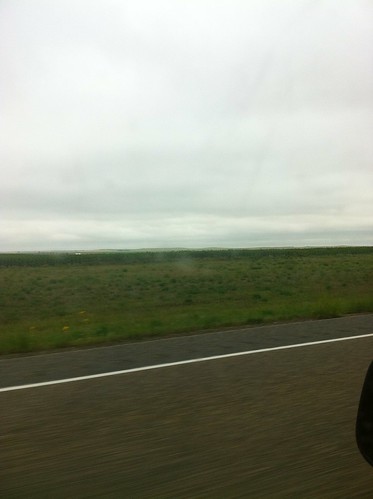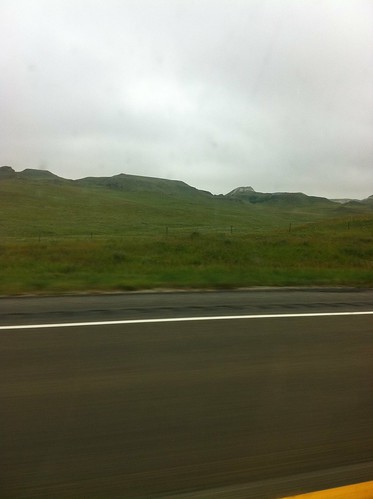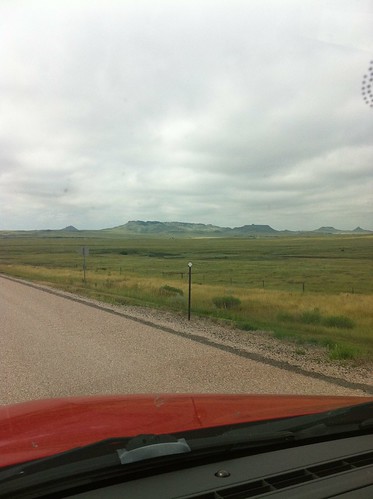This is when it is not a drought!!!! Read through these and some of you know these areas and some of these creek beds are dry creek beds that ended up a mile wide.
South Platte &
Arkansas Basins:
June 14-20, 1965
To view the summary as a pdf document (printer friendly) click here
Rainfall and Streamflow Data: click here
Damage Estimate: In the South Platte basin, within Colorado:
Over $504.4 million, with 75% of this damage occurring in the Denver metropolitan area (Mattai 1969).
In the Arkansas River Basin, within Colorado:
$37 million (Snipes 1974).
Deaths: 21
Meteorology
The rains began to fall on the eastern foothills of Colorado on June 13. During June 13-16, weak frontal systems were present in the Colorado region. Warm, moist air flowed into the state from the south, producing convective storms. Many of these storms were severe and produced large hail and funnel clouds. The storms on June 14-15 occurred in the Greeley-Sterling area, in the Bijou Creek basin southwest of Deer Trail, and in the Colorado Springs area. The rains were generally heavy with reports of damaging hail in some areas, especially around Colorado Springs, on June 14. An unofficial report of 12 inches fell during the night of June 14-15 at a ranch near Rockport, about 36 miles northeast of Fort Collins. A cold front settled into the region and became a stationary front by the morning of June 15.
By June 16 rainfall amounts increased immensely over much of eastern and southeastern Colorado and the storms turned more violent. The orographic effects of the divide between Colorado Springs and Limon and the divide extending from a point between Trinidad and Raton, New Mexico, generally eastward to the Panhandle of Oklahoma were quite pronounced during the storms of June 16 and 17. Unofficial rain amounts for June 16 in the South Platte basin were unprecedented. Heavy rains, unofficially 5? to 10?, also occurred to the south near Trinidad and a reported 3? to 7? fell in the vicinity of Cripple Creek. The torrential rains continued late into June 17. Rainfall amounts of over 5 inches for the 24-hour period ending in the late afternoon of June 17 were common in the storm area.
Some of the largest rain totals were observed in the southeast potion of the state. Many of these rainfall amounts were unprecedented. The 14 hour 15.5 inch rainfall south-southeast of Lamar was about three times the 100-year 12-hour rainfall. The 2-day rainfall of more than 10 inches on June 16-17 at the weather station Two Buttes 1NW exceeded the maximum recorded for any month since record keeping began in 1890. In addition, the 100-year 6-hour rainfall in the vicinity of Holly is 5.2 inches, while the observed rainfall at Holly on June 17 was 11.08 inches.
Flooding and Damage
Extreme rains fell over both the South Platte River and the Arkansas River Basins, causing a series of flood waves which resulted in progressive flooding. In the South Platte River basin severe river flooding was widespread from Plum Creek, just south of Denver, downstream to the Colorado-Nebraska State line. The South Platte floods occurred principally in four areas: north of Greeley and north and west of Sterling; the Plum Creek and Cherry Creek Basins; the Kiowa and Bijou Creek Basins; and along the South Platte River from Plum Creek to North Platte, Nebraska.
The rains also caused overland flooding. Southwest of Castle Rock immense orographic precipitation fell directly on top of Dawson Butte. Mattai (1969) described the destructive overland flow that occurred in the immediate area of Dawson Butte on June 16: ?The small natural channels on the steep slopes could not carry the runoff; so water took shortcuts, following the line of least resistance. Creeks overflowed, roads became rivers, and fields became lakes-all in a matter of minutes.?
The severe thunderstorms that moved across eastern Colorado June 14-15 caused flooding on creeks from Greeley to Julesburg. Damage to the area north of Greeley and west of Sterling occurred June 14-16. Many roads were flooded and bridges were washed out. Some areas in the towns of Galeton, Atwood, Sterling, and Greeley were under as much as three feet of water. Flooding was exacerbated when local drainage facilities became plugged by hail. Many citizens lost livestock, farm machinery and automobiles.
The Plum Creek gauging station near Louviers was destroyed, but observations indicated that the flow increased a thousand fold, from about 150 cfs to 154,000 cfs, in less than three hours. The peak discharge on June 16, 1965 was 20 times the previous maximum discharge in 23 years of record.
Damage in the Plum Creek basin was widespread. Heavy runoff deposited tons of debris, from sand to huge boulders and trees, on fields and pastures. Many roads were eroded and bridges were destroyed. Large cut banks, particularly along East Plum Creek, were left after land was washed away by the floodwaters. Hundreds of cars were stranded for more than a day when East Plum Creek washed out a bridge on I-25/HWY 85 south of Castle Rock. Much of the towns of Castle Rock and Sedalia were inundated. The Denver and Rio Grande Western Railroad between Denver and Palmer Lake sustained extensive damage, as did the Atchison, Topeka, & Santa Fe Railroad which follows the South Platte River and Plum Creek. The total cost for repairs on these rail lines was close to $1 million.
The 39,900 cfs peak on Cherry Creek at Melvin was 2.3 times the previous maximum discharge in a record extending back to 1939. This peak even exceeded the peak discharge of 34,000 cfs, at a site 6 miles downstream, caused by the failure of the Castlewood Dam in 1933. Three to six inches of rain fell within a few hours over most of the Cherry Creek drainage below Franktown. This precipitation caused major flooding between Franktown and the Cherry Creek Reservoir. Luckily, all flow from Cherry Creek was stored in the Cherry Creek Reservoir, a previously dry dam site just upstream from Denver.
The floods on the upper Kiowa and Bijou Creeks occurred on June 17, 24-30 hours after the floods on Plum and Cherry Creeks. In the 118-mi 2 Kiowa Creek basin above the town of Kiowa, the floods were several times the size of the design floods for the project structures. As a result, the floods caused extensive erosion damage. Many acres of crop and pasture land were a total loss from heavy erosion, streambank cutting or sediment deposition.
The flood peak on East Bijou Creek hit the town of Deer Trail on June 17, leaving tons of mud and debris and destroying 80% of the business section. An Air Force helicopter rescued several people, some of who were pulled out of East Bijou Creek. The three forks of Bijou Creek washed out or damaged bridges on the main line of the Union Pacific Railroad and highway I-70-U.S. 40. Bijou Creek also caused railroad and highway damage west of Fort Morgan and caused widespread crop and erosion damage.
To the north, heavy rains caused flooding in Fort Collins and Loveland on June 17. A flash flood on the Big Thompson River damaged a trailer park and low-lying farmlands near Loveland. In the Fort Collins area, flooding caused damage to bridges, roads and buildings.
The flooding along the South Platte River from Plum Creek to North Platte, Nebraska was the most destructive. The flood reached the South Platte River and the metropolitan areas of Denver by about 8 p.m. on June 16. The floodwaters spread to a half-mile or more in width. The peak discharge of the South Platte at Denver was 183 percent of the previous maximum during 67 years of record and historical information indicates that the 1965 discharge was the greatest since at least 1844. Many business, homes, industries, roads and highways were inundated. About 8,000 telephones were put out of service by the flood in the Denver area. More than half of these lines were not restored for several days.
The Denver metropolitan area suffered extensive damage. The flood zone represented 67 percent of the industrial area in the city. While the flood passed rather quickly on the night of June 16, the floodwaters were piled high with debris such as house trailers, lumber and large butane storage tanks. Many of the bridges in the downtown area became plugged with debris and were washed out when they could no longer withstand the pressure. Other bridges held, but sustained excessive erosion damage. The floodwaters left behind several feet of mud and debris all along the South Platte flood plain. In Denver, the cleanup job took several months and cost the city over $1 million.
The flood peak passed through Denver in the night and continued downstream to the already flooded South Platte River through Fort Morgan, Sterling and Julesburg. The residents of Fort Morgan described three flood crests in the South Platte. Two caused by the Bijou Creek floods of June 15-16 and 17-18 and the third from the main-stem South-Platte River flood that arrived from Denver 35 hours after the second Bijou Creek flood. After the Bijou Creek flood reached the South Platte, the normally innocuous river was more than a mile wide and choked with debris.
In the Arkansas River Basin, the river flooding was also devastating and widespread. Four major areas within the state of Colorado were hard-hit by floods: Fountain Creek north of Pueblo; the Purgatoire River and its tributaries below Alfalfa, Colorado; and the Arkansas River from Pueblo to Great Bend, Kansas; and south of the Arkansas River from Las Animas to the State line.
Flooding began on June 14 in the Fountain Creek basin near Colorado Springs causing heavy damage to roads and bridges. However, the major flooding down the full length of Fountain Creek was caused by the larger storms of June 17 north and east of Colorado Springs.
South of Pueblo, extensive damage occurred along the Purgatoire River and other tributaries of the Arkansas after heavy rainfall near Trinidad on June 16. The flooding was the worst in Trinidad since 1935. South of Trinidad, flood damage was also extensive along Raton Creek.
Along the Arkansas River and its tributaries between Pueblo and the John Martin Dam, near the Colorado/Kansas state line, approximately 45,000 acres were flooded. About 85 percent of the damage above John Martin Dam occurred in the Pueblo area. Agricultural losses, as well as damage to transportation and urban facilities, were substantial and amounted to about $15 million. Below Pueblo, north La Junta was severely damaged by floodwaters during June 17-19.
Although all water from the upstream area was stored in the John Martin Reservoir, serious flooding began less than three miles downstream. The flood below the dam was much more severe than the flood between Pueblo and the John Martin Dam; illustrating the limitations of a single flood-control structure. Over 220,000 acres of rural, urban, waste, and woodland lands were flooded between the John Martin Dam and Great Bend, Kansas.
Outstanding floods occurred on June 17 on the south-bank tributaries of the Arkansas. Wolf Creek flooded the town of Granada. Triggered by rains of over nine inches at Two Buttes and 11 inches near Holly on June 17, the floodwaters of Two Butte Creek reached a peak discharge of 82,600 cfs above Two Buttes Reservoir and increased to 182,000 cfs at the mouth, overtopping the reservoir. Floods devastated the towns of Holly and Granada, and both locales were evacuated as floodwaters inundated the valuable farmlands surrounding the two towns. The floodwaters that hit the town of Holly caused flooding that extended to Great Bend, Kansas.
Some locales higher in the Arkansas Basin also suffered flooding damage. On June 16, heavy rain and hail fell in scattered areas of the eastern slope causing local flooding in several areas. These rains flooded Canon City and Cripple Creek in Fremont County. Rainwater flooding in Canon City caused damage to crops, roads, and bridges. The rains washed out three reservoirs in the Cripple Creek-Victor area that had been in use since 1892. Heavy rains near the town of Flagler in Kit Carson County caused damage to roads and bridges.
Near the headwaters of Big Sandy Creek, an Arkansas north-bank tributary, the towns of Peyton, Ellicott, Rush, Calhan, Ramah, and others in El Paso County were isolated for a time on June 17 by floodwaters after the area was hit with heavy rains and hail. The flooding caused heavy damages to crops, roads, and bridges. However, Ramah Reservoir reduced the peak flow on Big Sandy Creek significantly.
Statewide, the flood destroyed or damaged more than 2,500 homes. Repair and replacement of bridges and highways in the State Highway system alone cost $9 million. The city and county of Denver spent an additional $914,000 on repair of their streets and bridges.
21 people drowned or their deaths were attributed to the storms or activities related to the 1965 floods. Four of the drownings occurred in the Bijou Creek flood.
Rainfall Data:
Date
Location
Peak Rainfall
6/14
Nunn
1.06" in 1 hr.
6/15
Byers
1.45" in 1 hr., 2.25" in 3 hrs., 2.74" in 24
6/15
Deer Trail
1.44" in 1 hr., 2.44" in 3 hrs.
6/15
Elbert County
6" in 30 min.
6/16
Castle Rock
7.00" in 24 hrs.
6/16
Douglas County south of Castle Rock
Up to 14" in about 4 hrs, fell mostly between 2-5 p.m.
6/16
Larkspur and Palmer Lake
More than 14" in about 4 hrs.
6/16
Manitou Springs
1.65" in 1 hr., 1.77" in 3 hrs., 2.40" in 24
6/16
Rocky Ford area
2.5" in 3 hrs.
6/15-16
28 mi. southeast of Lamar
15.5" in 14 hrs.
6/17
Along Palmer Ridge SE of Elbert City
Up to 12" in about 3 hrs.
6/17
Deer Trail
1.05" 1 hr.
6/17
El Paso County
6" in 4 hrs.
6/17
Fort Collins
2.31" in 1 hr., 2.46" in 3 hrs.
6/17
Fountain
4.70" in 6 hrs.
6/17
Holly
11.08" in 6 hrs.
6/17
Near Falcon, El Paso County
Up to 14"
6/17-18
Two Buttes 1NW
10"
Stream Flow Peaks:
Date Location Peak Discharge
6/14 Fountain Creek at Security 3,890 cfs
6/16 East Plum Creek 126,000 cfs (1,170 cfs per sq. mi.)
6/16 West Plum Creek 36,800 cfs
6/16 Cherry Creek near Melvin 39,900 cfs
6/17 Big Sandy Creek near Calhan 60,700 cfs at 5 p.m.
6/17 Jimmy Camp Creek 124,00 cfs
6/17 South Platte at Denver 40,300 cfs
6/17 South Platte at Fort Lupton 36,800 cfs
6/17 Fountain Creek at Security 21,500 cfs
6/17 Fountain Creek at Pueblo 80,000 cfs (estimate)
6/17 Purgatoire River at Trinidad 15,700 cfs
6/17 Kiowa Creek at Elbert 41,500 cfs (1,451 cfs per sq. mi.)
6/17 Wolf Creek above Granada 35,300 cfs
6/17 Two Butte Creek at the mouth of Two Buttes Reservoir 182,000 cfs after overtopping the reservoir
6/18 Bijou Creek near Wiggins 466,00 cfs
6/18 South Platte at Balzac 123,000 cfs
6/18 Arkansas R. above John Martin Res. 104,00 cfs
6/18 Arkansas R. at Caitlin Dam 43,200 cfs
6/18 Purgatoire River near Higbee 105,00 cfs (estimated)








